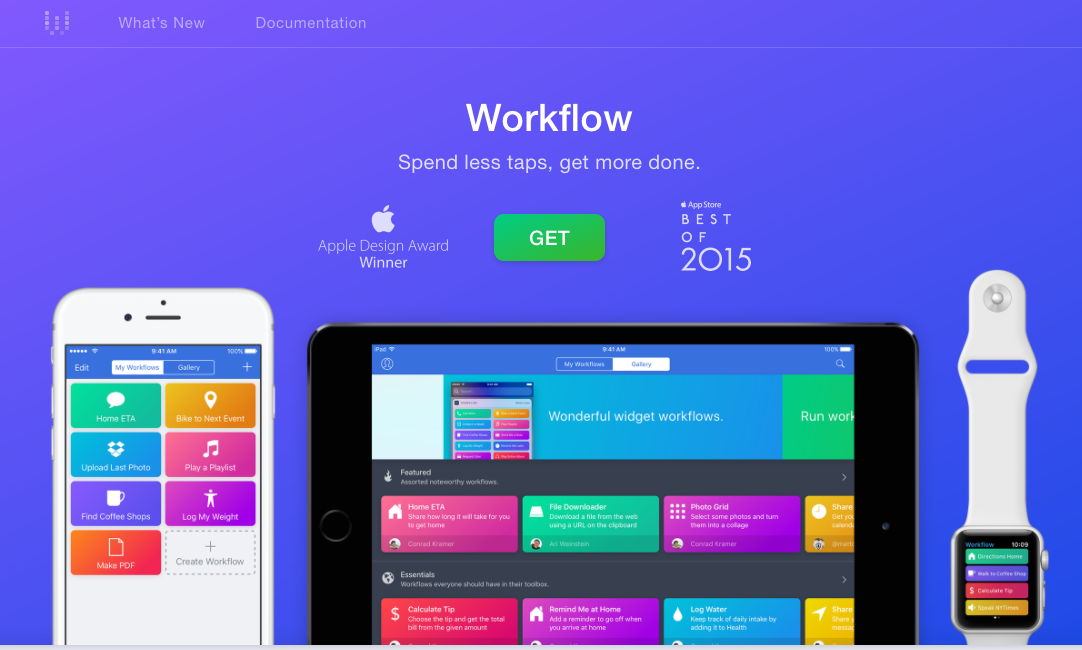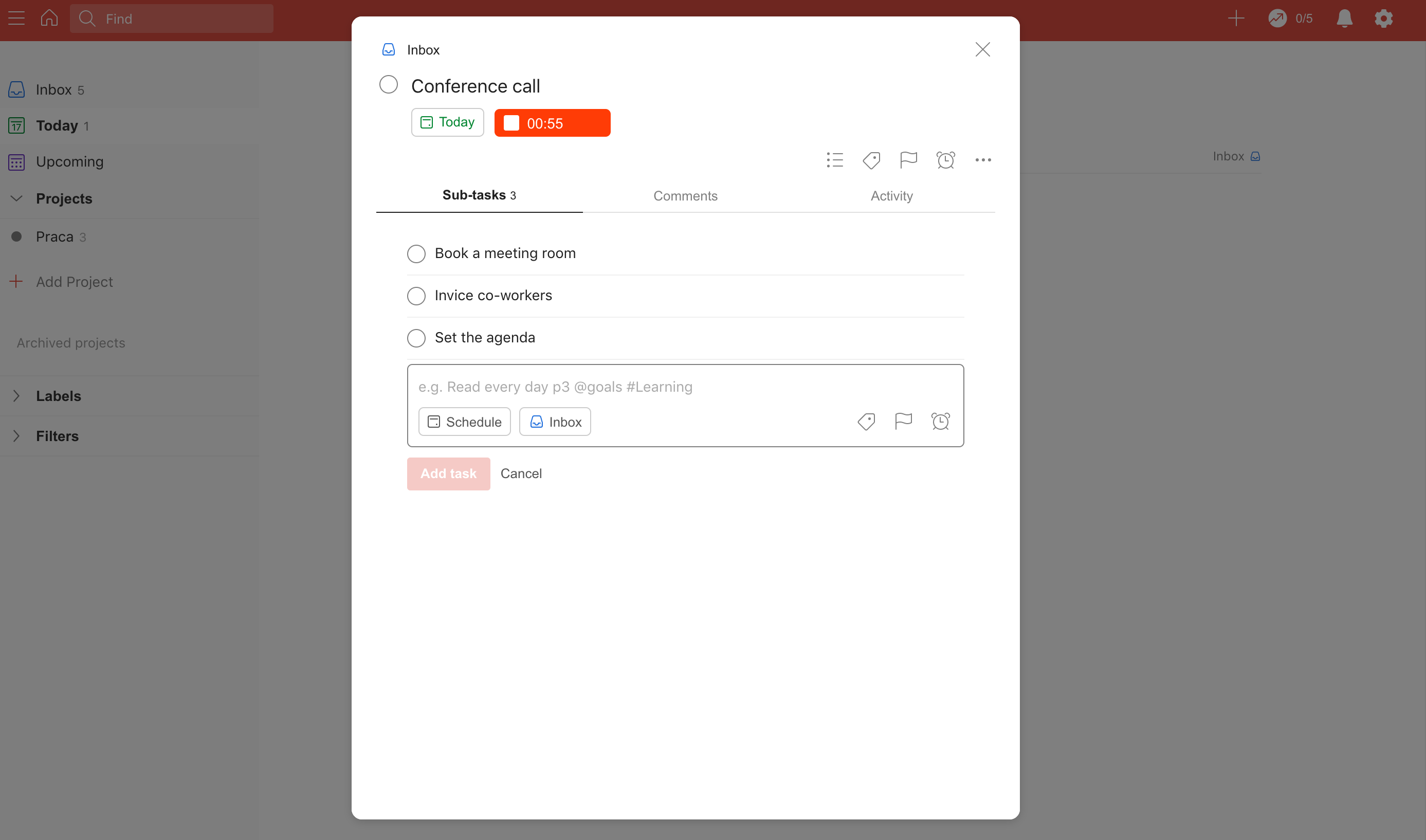No problem — simply export your tasks from the other program or spreadsheet into a CSV file and then import them into Todoist. When importing tasks using a CSV file you must stick to a specific format that Todoist can recognize. Download this template and modify it to ensure that you don’t encounter any issues when importing your tasks. This is an open source tool to backup Todoist data as JSON or CSV. Feel free to use my referral link and get two free months of Todoist Premium! Disclaimer: Export for Todoist is not created by, affiliated with, or supported by Doist.
Free up your mental space
Regain clarity and calmness by getting all those tasks out of your head and onto your to-do list (no matter where you are or what device you use).
Google Play
Editor’s Choice4.7 stars, 187K+ reviews
App Store
Featured app4.8 stars, 30K+ reviews
The Verge
Todoist has helped
millions of people completeover 1.5 billion tasks
in 150+ million projects.
I literally couldn’t do my job or even manage all the business of being a fully functioning parent and spouse without Todoist.
As a software engineer, it’s useful to break down big projects into smaller tasks, and Todoist is perfect for that purpose.
I kept track of all my school tasks in Todoist and, in 2016, I became the first one in my family to obtain a bachelor’s degree.
Todoist has revolutionized the way we run our small business by helping us simplify projects and coordinate tons of details.

Trevor Stephens
General Manager at Topline Builders
Read moreTodoist gave us the focus to scale our company from 2 to 75 employees, $12M in VC financing, and 350+ happy enterprise customers.
Todoist helps me organize all my writing projects. And that makes it an indispensable tool both in business and in life.
A task manager you can trust for life
In the 14 yearsand 87 days that we’ve been building Todoist, we’ve never considered selling out or becoming acquired.
Our team is committed to staying independent and earning your trust for as long as you need our apps.
 Learn about our long-term mission
Learn about our long-term missionThis post is also available in: Français (French)
Use Todoist as a task manager to visualize and sequence activities, especially for information workers. Here is a summary of the main features when evaluating your task management tools.
Why Todoist as a task manager?
Days are never linear for information workers. Even with the best intentions, your work may jump from one theme to another without necessarily spending two straight hours on the same activity. Anyway, even if we plan to for continuous stretches of work, there is always the phone and email to interrupt us. (see email management)
Plan your day, plan priorities: A task manager can put all the things to do in the visible horizon and associate a priority, but also establish a sequence, an order that makes sense in which to execute them. This planning process is a mental, logical activity that may be done in ‘off time or during the day to reassess immediate and future activities.
The characteristics of a task manager
To use GTD terminology, a task manager must first be the Trusted System. The system in which all activities are deposited to be planned, and available on all platforms, at any time. But most of all the system that you trust. But how is that an advantage?
During the day we might consult the tool in a “formal” way, but at lunch, in front of the TV, on the train, in short at any free time we can consult our task planner, to think about it, to reorganize, in short, to fine-tune and adjust. This mix of different types of planning should help to arrive at something realistic. The goal is to ‘feel’ whether the plan stands up to scrutiny (is realistic) and it is this often and regular review that allows us to evaluate and reassess it.
N.B. we are often more warned not to be into work too much, but this “off” time becomes productive and allows you to be free to concentrate on planned work during work time.
Why Todoist?
Todoist is not unique in being available on all platforms, but synchronization is instantaneous, which allows you to go for a coffee, check your phone or tablet and by the time the coffee break is over everything is already up to date.
Flexible sequencing
The application allows you to be very flexible project within projects, tasks and subtasks. You can list items and group them easily, which allows you to step back and think.
If you pour out the detail in brainstorming mode, you can also easily group items into a header task that is easier to remember, to identify with.
It is important to identify with the tasks and to take possession of them. This ‘gaming’ process of experimenting with different configurations, placing, moving and reorganizing items is a way to appropriate your tasks and thus leads to better schedules and better results.
Labels: Labels can be freely associated with tasks
It is possible to use keywords by subject, by domain, or to create statuses like current, next, blocked – to being line with the GTD model.
I advocate this second scheme and use a clear project subject.

Todoist Export To Excel
In your head or written down
In any case it is important to formulate, to write down what needs to be done and what has been done. This translation into written word is very important. Until you formulate the task in words it has very little reality. Or conversely, when it is written, the task begins to take shape. Words are important, how you express the task is important and needs to be precise.
Example of different ways of expressing a task
Todoist Import Excel
- ‘I need a shelf’ is the expression of a requirement.
- ‘I would like to have a shelf’ is a wish
- ‘build a shelf’ is a goal
But going to the store to buy a plank of wood is something that can be done in reality. This real-world activity allows us to notice that before buying the wood we first need to measure it and that we have neither screws nor tape measure! When the expression of the task is concrete and real, it takes shape.
The GTD (Getting Things Done) method invites us to focus on the things that can be done, concretely, in reality, in the physical world.
Any planning system must help us to be realistic, to virtually plan the required steps, to visualize them and to organize them in a feasible sequence. All of this planning increases the likelihood that tasks planned will be feasible, that we want to do them, and that we can actually do them.
I also advocate a section either by using project tasks or labels called ‘objectives’ which allows us to observe whether what you are planning are indeed tasks or objectives.
This flexibility, this ability to play, to change, to move is a way of brainstorming, of playing with items until you are satisfied that they are realistic.
Comparison with other tools
Toodledo:
I was a very big fan of Toodledo for a long time and still am in a certain way. First, because it beautifully implements GTD terminology. But Toodledo works by filter, by sorting. That is, each item is associated with a priority, a delivery date, a deadline, and the interface sorts items by priority or by the due date.
But unfortunately, in reality, tasks may not necessarily be carried out in linear order, nor by priority or due date. It is important to attribute a priority or due date to an item, but also to establish a real execution sequence, that is, the order in which you will execute tasks. This is one more factor that allows you to evaluate whether the sequence is feasible.
Toodledo, therefore, presents things in order of priority but does not allow you to establish a real action plan, an order of execution.
Excel:

Microsoft Excel allows you to establish a task schedule, the first column lists the tasks to do, columns represent a time element: either day, week or month. This presentation can be very useful as a [strategic] planning tool but is not suitable for daily task management. It is not sufficiently available on all platforms or flexible.
Kanban(Odoo):
Todoist Excel Integration

Kanban is an excellent planning tool, it is flexible, you can establish sequences, columns as stages or projects and deadlines. But the tool is not available off-line without an enterprise subscription and therefore planning is limited to the desktop, possibly on the tablet, but not on the phone, not on the train, not offline.
Othertools: There are of course plenty of other planning tools, the market is perhaps saturated, but Todoist remains by far the most flexible, the most available, the easiest to use and the most reliable.
Any Todo (Gneo): was very promising, bringing together Evernote and Eisenhower, but unfortunately, its execution was unreliable. Perfect, but the synchronisation was unreliable and there was no simple efficient fast, work area like Todoist.
Droptask:
The last word is for Ayoa, which also was, is, very promising, but in reality is still in development.
Its interface is very good, with a strong synchronisation to Evernote, a visually pleasing interface that allows you to easily promote content to the work area by tagging in Evernote.
Fast and interesting for modelling, but unfortunately the list mode is not effective and above all, is not available in the mobile application.
Todoist Export To Excel
Conclusion
Of course, all this is just advice, but from an experienced user, who has tried just about every tool. It’s up to you to feel the benefits of the tool and to appropriate it. The market is certainly still expanding, the tools will evolve, again and again, so stay vigilant and open to the sensible principles of GTD and others.
The ultimate test is to assess whether you succeed in “get things done” to perform tasks, in greater numbers in an efficient and low-friction manner. The tasks you perform make a real contribution to getting closer to your goals.
A future chapter will be devoted to examining and measuring the distance between the current position and where you want to be, that is, to strive towards and achieve your goals. The tool is the right one if you feel that it allows you to get closer to your goals and that your goals are evolving constructively.
